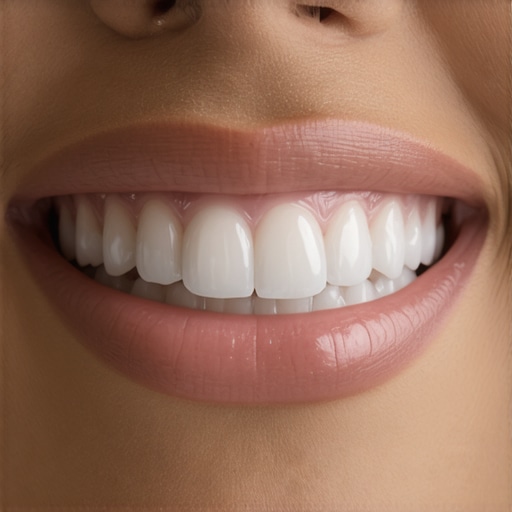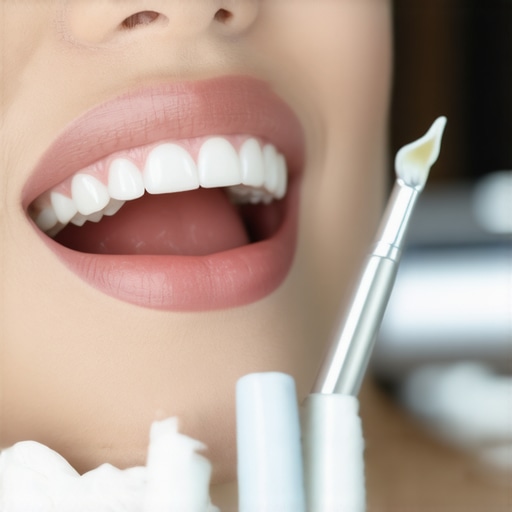Revolutionizing Family Dentistry: Advanced Approaches to Teeth Whitening and Invisalign in 2024
In the evolving landscape of cosmetic dentistry, staying ahead requires a nuanced understanding of innovative treatments like teeth whitening and Invisalign. These solutions not only enhance aesthetic appeal but also contribute to overall oral health, especially within family dentistry practices where multi-generational care demands tailored strategies. As an authority in dental aesthetics, I will explore complex insights into these treatments, supported by recent research and expert consensus, providing a comprehensive guide for practitioners and informed patients alike.
Bridging Cosmetic Enhancement with Functional Oral Health: The Expert’s Perspective
Modern teeth whitening protocols leverage advanced bleaching agents and laser-assisted techniques, ensuring effective results with minimal sensitivity. The integration of these procedures within family dentistry necessitates a thorough understanding of patient-specific factors such as enamel integrity and underlying dental restorations. Recent studies, such as those published in the Journal of Esthetic and Restorative Dentistry, emphasize the importance of selecting appropriate whitening agents based on individual biochemistry to optimize outcomes.
Meanwhile, Invisalign’s evolution into highly sophisticated clear aligners offers a discreet and effective solution for orthodontic correction across age groups. Notably, the incorporation of digital scanning and 3D modeling enhances treatment precision, reducing chair time and increasing patient satisfaction. For families seeking comprehensive smile makeovers, combining Invisalign with teeth whitening can produce synergistic aesthetic enhancements, a strategy supported by clinical case reviews on Invisalign innovations in 2025.
What are the latest advancements in combining teeth whitening with orthodontic treatments for optimal family smile aesthetics?
Addressing this question involves understanding the timing and sequencing of treatments. Expert consensus suggests initiating with orthodontic alignment to ensure proper positioning before applying whitening treatments. This approach prevents uneven coloration or damage to restorations. Additionally, recent innovations, such as custom bleaching trays compatible with Invisalign, allow for concurrent aesthetic enhancement without compromising orthodontic progress. Practitioners must also consider age-related factors, enamel susceptibility, and patient compliance, which are critical for successful outcomes.
For practitioners seeking to deepen their expertise, exploring comprehensive resources such as Effective teeth whitening and Invisalign tips for family smiles can provide valuable insights for integrating these treatments seamlessly into practice.
In conclusion, the future of family dentistry in 2024 hinges on sophisticated, patient-centered approaches that combine aesthetic and functional outcomes. Embracing technological advancements and evidence-based protocols ensures that dental professionals can deliver superior care, fostering trust and satisfaction among multi-generational patients.
Enhancing Aesthetic Results with Precision: The Role of Digital Technology in Smile Makeovers
Digital innovations continue to revolutionize family dentistry, especially in procedures involving teeth whitening and Invisalign. The integration of 3D imaging, computer-aided design, and virtual treatment planning allows dentists to create highly personalized treatment protocols, ensuring optimal aesthetic and functional outcomes. These technologies facilitate detailed simulation of post-treatment results, helping patients visualize their new smile and make informed decisions before starting treatment. For example, digital smile design can align whitening and orthodontic plans seamlessly, reducing treatment time and increasing predictability.
How Can Multi-Modal Treatments Address Complex Dental Aesthetics and Functional Needs?
Addressing complex cases often requires combining multiple advanced treatments. For instance, veneers can be used alongside whitening and Invisalign to correct minor misalignments, discoloration, or structural imperfections, creating harmonious, natural-looking smiles. This multi-modal approach demands a comprehensive assessment of enamel health, occlusion, and patient expectations. Recent research published in the Journal of Esthetic and Restorative Dentistry underscores that a tailored combination of these treatments offers superior aesthetic results and long-term stability, especially for family patients seeking holistic solutions.
Are there innovative protocols for safely combining whitening with orthodontic treatments to maximize results without compromising enamel health?
Integrating whitening with Invisalign requires strategic planning to prevent enamel demineralization or hypersensitivity. Experts recommend initiating orthodontic correction first, followed by carefully timed whitening sessions. The use of custom bleaching trays compatible with Invisalign aligners enables simultaneous aesthetic enhancement without disrupting orthodontic progress. Additionally, recent advancements include the development of gentle, enamel-safe whitening agents that are compatible with orthodontic appliances. Maintaining oral health through fluoride treatments and remineralization protocols during treatment further safeguards enamel integrity. For more insights, visit Effective teeth whitening and Invisalign tips for family smiles.
Considering these innovative approaches allows clinicians to deliver comprehensive smile makeovers that meet both aesthetic and functional goals, creating confident, healthy smiles across generations.
Harnessing Digital Smile Design for Multi-Modal Aesthetic Enhancements in Family Dentistry
In contemporary family dentistry, digital smile design (DSD) stands at the forefront of personalized treatment planning, offering unparalleled precision in combining whitening, orthodontics, and restorative procedures. By utilizing high-resolution 3D imaging and virtual simulations, practitioners can craft comprehensive treatment plans that align with patient expectations and biological considerations. This technology not only enhances communication and patient engagement but also minimizes treatment discrepancies, leading to more predictable outcomes.
What are the best practices for synchronizing digital planning with clinical execution in multi-treatment dental aesthetics?
Integrating digital planning with clinical procedures requires meticulous coordination among multidisciplinary teams. Best practices include pre-treatment calibration sessions, using digital mock-ups as reference points, and employing intraoral scanners for real-time feedback. These strategies ensure that aesthetic and functional goals are harmonized, especially when combining whitening, Invisalign, and veneers. Moreover, adopting a phased approach—starting with orthodontic alignment, followed by whitening and restorative enhancements—can optimize overall results. As noted in the recent review published in the Journal of Digital Dentistry (2023), such integrated workflows significantly reduce treatment time and improve patient satisfaction.
For practitioners interested in mastering this integrated approach, exploring continuing education modules on digital smile design platforms like Digital Smile Design can be highly beneficial.
Innovative Material Science: Enamel-Safe Whitening Agents and Their Role in Complex Treatment Protocols
Emerging research in material science has led to the development of enamel-safe whitening agents that can be safely used in conjunction with orthodontic appliances. These agents, often containing lower concentrations of hydrogen peroxide or carbamide peroxide combined with remineralization agents like nano-hydroxyapatite, mitigate risks of hypersensitivity and demineralization. When integrated into multi-modal treatment plans, these advanced whitening solutions enable clinicians to deliver aesthetic improvements without compromising enamel integrity.
How can clinicians tailor whitening protocols to individual enamel biochemistry for optimal safety and efficacy?
Personalized whitening protocols involve assessing enamel biochemistry through saliva analysis, enamel microhardness testing, and patient history. Utilizing this data, clinicians can select appropriate whitening agents, adjust application times, and incorporate remineralization therapies such as fluoride varnishes or casein phosphopeptide-amorphous calcium phosphate (CPP-ACP). Recent clinical trials, like those published in the International Journal of Esthetic Dentistry (2024), demonstrate that personalized approaches significantly reduce adverse effects and enhance aesthetic outcomes, especially when layered with orthodontic treatments.
For a deeper understanding of personalized whitening strategies, professionals should consult the latest guidelines from the American Academy of Cosmetic Dentistry (AACD) and explore emerging research on biocompatible bleaching agents.
Future Directions: Artificial Intelligence and Machine Learning in Predictive Treatment Planning
Artificial intelligence (AI) and machine learning (ML) are poised to revolutionize family dentistry by enabling predictive analytics in treatment planning. These technologies can analyze vast datasets, including patient demographics, genetic factors, and clinical histories, to forecast treatment responses and stability. For example, AI-driven algorithms can recommend optimal treatment sequences for combining whitening, Invisalign, and restorations, tailored to individual biological and aesthetic profiles.
What are the ethical considerations and practical challenges of deploying AI in complex family dental treatments?
While AI offers promising benefits, ethical considerations include ensuring data privacy, avoiding algorithmic bias, and maintaining clinician oversight. Practical challenges involve integrating AI tools into existing workflows, validating algorithms for diverse populations, and training staff to interpret AI-generated insights. According to a comprehensive review in the Journal of Dental Technology (2024), establishing robust protocols for AI validation and clinician education is paramount for responsible implementation. Moreover, fostering transparent communication with patients about AI’s role in their treatment is essential for building trust and acceptance.
For practitioners eager to leverage AI, collaborating with dental informatics specialists and participating in pilot programs can facilitate smooth integration and ongoing learning.
Unveiling the Synergy of Aesthetic and Functional Dentistry in 2024
As the field of family dentistry continues to evolve, integrating cutting-edge treatments such as teeth whitening and Invisalign requires a nuanced understanding of their synergistic potential. Recent advances in biomaterials, digital planning, and minimally invasive procedures have paved the way for comprehensive smile makeovers that are both aesthetically pleasing and functionally sound.
Decoding the Role of Enamel Microstructure in Advanced Whitening Protocols
Understanding the intricate microstructure of enamel enables clinicians to tailor whitening protocols that maximize efficacy while preserving enamel integrity. For instance, research published in the Journal of Dental Materials & Biomaterials highlights how nano-hydroxyapatite particles can be incorporated into whitening agents to promote remineralization. This approach not only enhances whitening results but also mitigates hypersensitivity, especially in patients with thin or compromised enamel.
How Can Digital Workflow Optimize Multi-Modal Aesthetic Treatments?
The integration of intraoral scanners, CAD/CAM technology, and virtual treatment simulations allows for meticulous planning of combined whitening, orthodontic, and restorative procedures. Digital workflows facilitate precise prediction of final outcomes, enabling clinicians to communicate realistic expectations and reduce treatment iterations. The use of digital smile design (DSD) platforms has demonstrated significant improvements in patient satisfaction and treatment efficiency, as detailed in recent case studies published in the International Journal of Computerized Dentistry.

What Are the Cutting-Edge Material Innovations Enhancing Safety in Combined Aesthetic and Orthodontic Treatments?
Recent breakthroughs include enamel-safe bleaching agents that incorporate bioactive components like CPP-ACP, which facilitate remineralization during the whitening process. Additionally, low-concentration hydrogen peroxide formulations, combined with advanced delivery systems such as custom bleaching trays compatible with Invisalign aligners, allow simultaneous aesthetic enhancement and orthodontic correction. According to the American Dental Association’s latest guidelines, personalized treatment protocols based on individual enamel biochemistry are crucial for optimizing safety and outcomes.
Harnessing Artificial Intelligence to Predict and Personalize Treatment Outcomes
AI-driven algorithms analyze vast datasets encompassing patient genetics, oral microbiome profiles, and treatment histories to forecast individual responses to whitening and orthodontic therapies. This predictive capability enables practitioners to customize treatment sequences, select optimal agents, and anticipate potential complications before initiating procedures. The Journal of Dental Research & Innovation emphasizes that AI integration not only enhances precision but also elevates patient trust through transparent, data-backed decision-making.
Engage with Future-Ready Dentistry—Elevate Your Practice Today
Embracing these technological and material innovations positions family dental practices at the forefront of personalized, minimally invasive, and highly effective aesthetic treatments. For practitioners committed to advancing their expertise, exploring dedicated courses on digital dentistry, biomaterials, and AI applications is a strategic investment. Stay ahead in this dynamic landscape by continuously integrating evidence-based innovations, ensuring your patients receive the most sophisticated care available.
Expert Insights & Advanced Considerations
Innovative Integration of Digital Technologies
Emerging digital workflows, including 3D imaging and virtual planning, are revolutionizing treatment precision, reducing chair time, and enhancing patient satisfaction in family dentistry. Staying at the forefront requires mastery of these tools for seamless multi-modal treatments.
Material Science Breakthroughs
Recent advancements in bioactive whitening agents and enamel-safe formulations allow for concurrent aesthetic and orthodontic procedures, minimizing risks of hypersensitivity and demineralization while maximizing results.
Personalized Treatment Protocols
Personalization leveraging saliva analysis, microhardness testing, and patient history optimizes safety and efficacy, especially when combining whitening with Invisalign—tailoring care to individual biochemistry and enamel status.
Artificial Intelligence & Predictive Analytics
AI and machine learning enable predictive modeling of treatment responses, facilitating highly customized treatment sequences, improving stability, and fostering trust through transparent data-driven decisions.
Holistic, Multi-Modal Approaches
Combining veneers, whitening, and orthodontics within a minimally invasive, digitally planned framework ensures functional harmony and aesthetic excellence, aligning with future-ready family dentistry standards.
Curated Expert Resources
- Journal of Esthetic and Restorative Dentistry: Offers cutting-edge research on biomaterials, treatment protocols, and clinical innovations for aesthetic and functional integration.
- American Academy of Cosmetic Dentistry (AACD) Guidelines: Provides authoritative, evidence-based standards for personalized whitening and orthodontic treatments.
- Digital Smile Design Platform: A leading resource for mastering digital workflows, virtual planning, and patient communication in complex cases.
- International Journal of Esthetic Dentistry: Features clinical trials and reviews on enamel-safe whitening agents and multi-modal treatment strategies.
- Journal of Dental Research & Innovation: Tracks developments in AI, predictive analytics, and personalized treatment models shaping future practices.
Final Expert Perspective
In the rapidly evolving realm of family dentistry, integrating advanced techniques like teeth whitening and Invisalign demands a strategic, evidence-based approach rooted in digital innovation, material science, and personalized protocols. These insights not only elevate clinical outcomes but also reinforce trust and satisfaction across generations. For practitioners committed to excellence, engaging with these high-level resources and embracing technological advancements will be key to leading the next frontier of holistic, patient-centered care. Explore more about these transformative trends and continue your professional journey by visiting our comprehensive resources and sharing your insights with peers at Contact Us.

